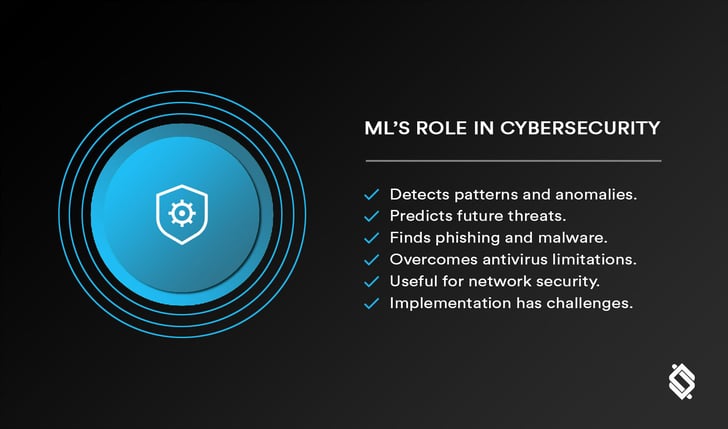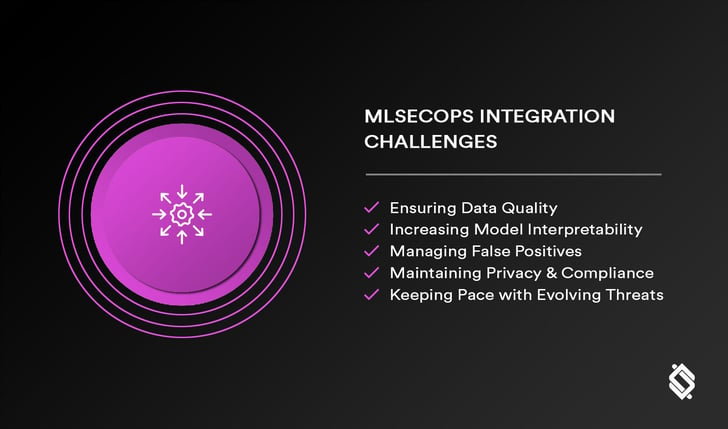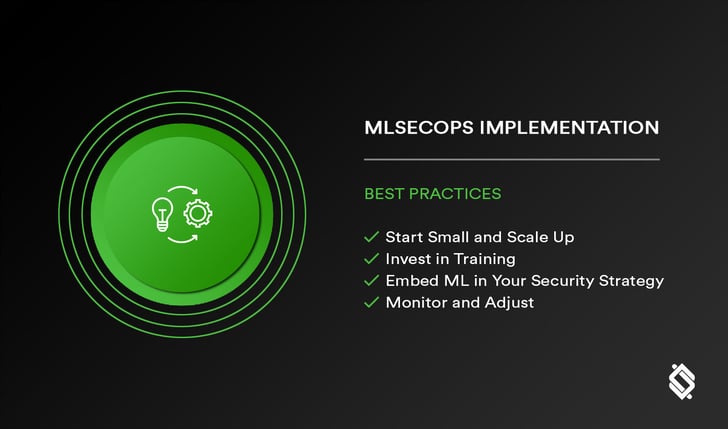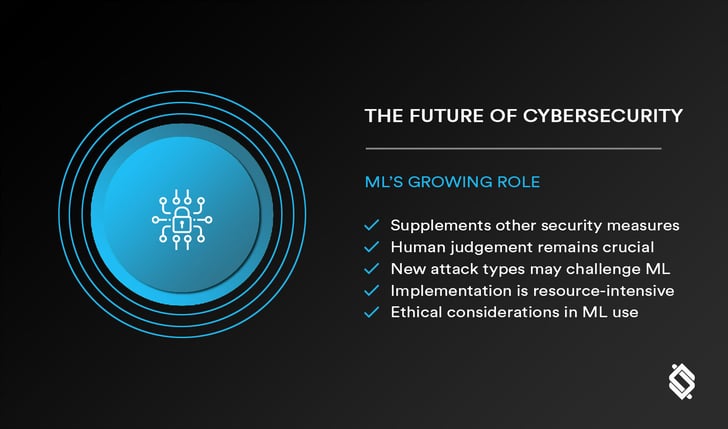In the modern era, where digital transformation is no longer a luxury but a necessity, the potential for cyber threats has escalated exponentially. As we become more reliant on technology in our day-to-day activities, from personal banking to business operations, the landscape for cyber threats has broadened, and traditional security measures have proven inadequate. The sophistication and complexity of cyber threats are increasing at an alarming rate, necessitating a new approach to cybersecurity. This new approach is Machine Learning Security Operations (MLSecOps), a field that has emerged from the need to keep pace with the ever-changing threat landscape.

Machine learning, a subfield of artificial intelligence, has been transforming various sectors, from healthcare to finance, and cybersecurity is no exception. By analyzing patterns and identifying anomalies in vast amounts of data, ML algorithms can predict and prevent cyber threats before they occur. However, like any revolutionary technology, implementing MLSecOps poses several challenges. These challenges need to be addressed effectively to harness the full potential of machine learning in cybersecurity.
This article will delve into the potential of machine learning in cybersecurity, the challenges faced when implementing MLSecOps, and the solutions to these challenges. It also provides best practices for implementing MLSecOps and discusses the future of this dynamic field.
The Potential of Machine Learning in Cybersecurity

In the realm of cybersecurity, machine learning holds immense potential. Its ability to analyze vast amounts of data quickly and accurately sets it apart from traditional security measures. Machine learning models can identify patterns and anomalies that might go unnoticed by human analysts due to the sheer volume of data.
Additionally, machine learning models can learn from past incidents to predict future threats. This ability allows them to keep pace with the evolving nature of cyber threats. As new types of attacks emerge, machine learning models can update their understanding and improve their ability to detect these new threats.
For instance, machine learning can be used to detect phishing attacks. By analyzing email content and metadata, ML models can identify subtle patterns that distinguish phishing emails from legitimate ones. This capability extends beyond simple keyword matching, allowing ML models to detect sophisticated phishing attempts that might fool traditional spam filters.
Another area where machine learning shows promise is in detecting malware. Traditional antivirus software relies on signature-based detection, which involves comparing files against a database of known malware signatures. This approach is ineffective against zero-day attacks, which exploit previously unknown vulnerabilities. Machine learning models can overcome this limitation by analyzing the behavior of files to identify malicious activity, even if the malware is completely new.
In network security, machine learning can be used for intrusion detection. ML models can analyze network traffic to identify unusual patterns that may indicate an attempted breach. They can also identify patterns associated with specific types of attacks, allowing them to detect threats more accurately than traditional intrusion detection systems.
Despite these promising capabilities, implementing MLSecOps is not without challenges. These challenges range from technical issues like ensuring data quality and model interpretability, to organizational challenges like managing false positives and maintaining privacy and compliance.
Challenges and Solutions in Implementing MLSecOps

Challenge 1: Ensuring Data Quality
The effectiveness of ML models is directly proportional to the quality and relevance of the data they are trained on. In an ideal world, ML models would be trained on clean, comprehensive, and unbiased data. However, in the real world, data is often incomplete, noisy, or biased. These issues can distort the patterns learned by the ML models, leading to inaccurate predictions or false alarms.
Solution: Ensuring data quality requires a robust data management strategy. This includes regular data audits to identify and rectify issues like missing values, outliers, and inconsistencies. Data cleaning tools can be used to automate some parts of this process, but human oversight is still necessary to ensure data quality.
Training staff on best practices for data handling can also help ensure data quality. This includes practices like validating data at the point of entry, documenting data collection and processing procedures, and regularly reviewing and updating these procedures.
Establishing data governance policies can also help maintain data integrity and ensure compliance with privacy regulations. These policies should outline how data is collected, stored, processed, and used, ensuring all activities are conducted responsibly and in compliance with relevant regulations.
Diversifying data sources can also improve the accuracy of ML models. By training models on data from a variety of sources, they can learn to recognize a wider range of patterns, making them more effective at detecting threats.
Challenge 2: Increasing Model Interpretability
Machine learning models, especially complex ones like deep neural networks, are often seen as 'black boxes'. Their inner workings are difficult to understand, which leads to a lack of transparency. This can make it hard for security teams to trust the predictions made by these models, especially when they contradict human intuition or existing knowledge.
Solution: Increasing model interpretability requires the use of explainable AI (XAI) techniques. These techniques aim to make the inner workings of ML models more transparent and understandable. For instance, feature importance rankings can be used to show which features the model considers most important in making its predictions. Visualization techniques can also be used to illustrate how the model's predictions change as the input data changes.
Fostering a culture of collaboration between data scientists and security professionals can also help improve model interpretability. By working together, data scientists can gain a better understanding of the security domain, while security professionals can learn more about machine learning. This mutual understanding can facilitate more effective communication and lead to better decision-making.
Challenge 3: Managing False Positives
False positives, where harmless activities are flagged as threats, can be a major issue in MLSecOps. They can lead to wasted resources as security teams chase down non-existent threats, and they can reduce trust in ML systems.
Solution: Managing false positives requires a careful balance between sensitivity and specificity. In other words, the system needs to be sensitive enough to catch real threats, but specific enough to avoid flagging harmless activities. This balance can be adjusted by changing the threshold for flagging suspicious activities.
Continuous fine-tuning of ML models can also help manage false positives. By regularly testing the system against real-world scenarios and adjusting the model parameters based on the results, the system can become more accurate over time.
Regularly reviewing and updating the list of known threats can also help manage false positives. As new threats emerge and old ones become obsolete, this list needs to be updated to reflect the current threat landscape.
Challenge 4: Maintaining Privacy and Compliance
The use of machine learning in cybersecurity involves processing vast amounts of data, which often includes sensitive information. This raises concerns about privacy and compliance with data protection regulations such as the General Data Protection Regulation (GDPR). Any breach of these regulations can result in hefty penalties and damage to the company's reputation.
Solution: To address this challenge, organizations need to implement strict data governance policies. These policies should outline how data is collected, stored, processed, and used, ensuring all activities are conducted responsibly and in compliance with relevant regulations.
Furthermore, advanced techniques like differential privacy can be used to protect individual data points in datasets used for machine learning. This technique adds a certain amount of random noise to the data, making it difficult to identify specific individuals while still preserving the overall patterns in the data.
Organizations should also consider using privacy-preserving machine learning techniques, such as federated learning or homomorphic encryption. These techniques allow ML models to be trained on encrypted data, ensuring that sensitive information is never exposed.
Challenge 5: Keeping Pace with Evolving Threats
The cyber threat landscape is constantly evolving, with new types of attacks emerging frequently. Keeping pace with these changes is a significant challenge for MLSecOps. Traditional machine learning models, which are trained on historical data, may not be able to detect novel threats that they have not encountered before.
Solution: This challenge can be addressed by employing advanced machine learning techniques such as anomaly detection and active learning. Anomaly detection algorithms are designed to identify unusual patterns in data, making them effective at detecting new types of threats. Active learning, on the other hand, allows ML models to continuously learn from new data, helping them adapt to changing threat landscapes.
Regularly updating ML models with fresh data can also help keep them up-to-date with the latest threats. This requires a continuous data collection process, which can be facilitated by automated data collection tools and partnerships with external threat intelligence providers.
Best Practices for Implementing MLSecOps

Implementing MLSecOps is a complex process that requires careful planning and execution. Here are some best practices to guide this journey:
1. Start Small and Scale Up: Start with a small, manageable project before scaling up to more complex operations. This allows you to gain experience and iron out any issues before taking on larger projects.
2. Invest in Training: Ensure your team has the necessary skills to implement and manage MLSecOps. This may involve training existing staff, hiring new staff with the necessary skills, or a combination of both.
3. Embed ML in Your Security Strategy: Consider ML capabilities when designing security processes and infrastructure. This can involve using ML to automate routine tasks, using ML predictions to inform decision-making, or integrating ML with existing security systems.
4. Monitor and Adjust: Regularly review your strategies and adjust them based on performance metrics and changing threat landscapes. This involves monitoring the performance of ML models, keeping track of emerging threats, and adjusting your strategies accordingly.
The Future of Cybersecurity: MLSecOps at the Helm

As we look to the future, the role of machine learning in cybersecurity is likely to become even more significant. As threats continue to evolve and become more sophisticated, the ability of machine learning to analyze vast amounts of data and detect anomalies will become increasingly valuable.
However, it's important to remember that MLSecOps is not a silver bullet. It should be used in conjunction with other security measures, and its implementation should be guided by a clear understanding of its strengths and limitations. For instance, while machine learning can automate routine tasks and identify subtle patterns in data, it cannot replace human judgment when it comes to making strategic decisions or handling complex incidents.
In addition, while machine learning models can learn from past incidents to predict future threats, they may struggle to detect completely new types of attacks that they have not been trained on. Therefore, organizations should not rely solely on machine learning for their cybersecurity needs, but should also invest in other measures like threat intelligence, vulnerability management, and incident response.
Moreover, implementing MLSecOps requires significant resources, including skilled personnel, computational power, and high-quality data. Organizations need to consider these factors when deciding whether to adopt MLSecOps and how to implement it effectively.
Finally, the ethical implications of using machine learning in cybersecurity should not be overlooked. Issues like privacy, bias, and accountability need to be considered carefully to ensure that MLSecOps is used responsibly and ethically.
Conclusion

Machine Learning Security Operations presents a promising solution to the growing problem of cyber threats. Despite the challenges, by understanding and addressing these effectively, organizations can harness the power of machine learning to enhance their cybersecurity efforts.
As we move forward, integrating machine learning into security operations will be a crucial step for businesses seeking to bolster their defense against cyber threats. With the right strategies and a commitment to continuous learning and improvement, MLSecOps can lead to a more secure future.
However, it's important to remember that technology alone is not enough to ensure cybersecurity. A comprehensive approach that combines technology with human expertise, organizational processes, and a culture of security is needed. In this sense, MLSecOps is not just about implementing machine learning algorithms, but about transforming the way we approach cybersecurity.
In conclusion, while the road to effective MLSecOps may be challenging, the potential benefits make it a journey worth undertaking. By harnessing the power of machine learning, we can build more robust defenses against cyber threats and create a safer digital world for everyone.



